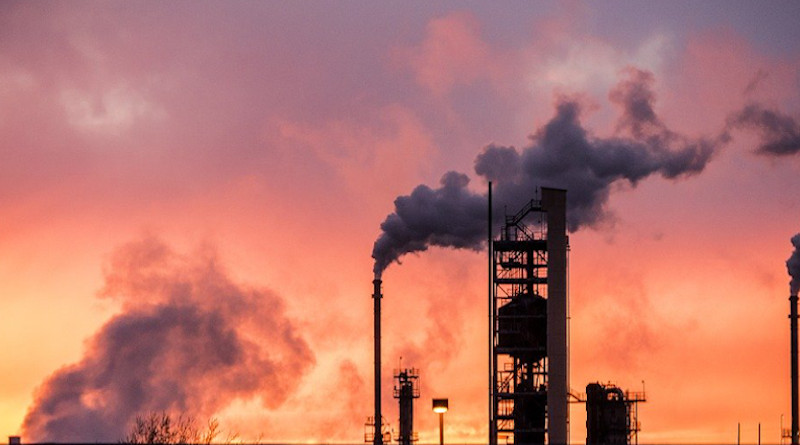Will US Shale Survive If Oil Hits $40? – Analysis
By OilPrice.com
By Irina Slav
Within a month, the U.S. oil benchmark West Texas Intermediate recorded two first-of-a-kind events. First, it fell below zero on April 20. Then, it soared up so high it is about to book its best month ever, CNBC’s Pippa Stevens noted in a recent commentary.
Still, many analysts and other observers remain wary of any premature optimism.
They have a good reason to be.
WTI is now trading at close to $35 a barrel. That’s up from less than $13 a barrel a month ago. Marked improvement is one way you could frame this–an incredible rally is another. And yet this rally did not happen on its own. It followed a fast reduction in production and the gradual lifting of lockdowns across the States and elsewhere as many parts of the world concluded that the worst of the coronavirus pandemic is over.
With such a significant cut in oil production and improving oil demand, it should be only a matter of time before prices rebound to pre-crisis levels of over $50 a barrel.
Or it would have been, had the situation been ordinary, which it isn’t.
Demand may be improving, but it is not improving as fast as oil bulls would have liked. In fact, as Forbes’ Gaurav Sharma forecast in a recent analysis of the market, the best that the bulls can hope for in the near term is $40 a barrel, and not before the third quarter.
Expectations of WTI back to $50 or $60 are currently unrealistic, therefore, but not unrealistic over the longer term. Granted, times right now are volatile. Nobody can say whether there would be a second wave of Covid-19 infections on a wider-than-regional-China scale. That’s one great uncertainty that is pressuring prices. Then, nobody can say whether there would not be a second price war within OPEC+ or between OPEC+ and other producers, notably the United States.
According to energy journalist Frank Kane, another price war is just a few dollars per barrel away.
With so much uncertainty around, it is no wonder the rebound in WTI—or Brent crude, for that matter—has not been greater. Even good news on the demand side, including an increase in Chinese oil imports and plans for expanding oil storage capacity, has not been enough to push prices much higher than $30 a barrel. In fact, even a statement from the International Energy Agency’s head saying that oil demand has yet to peak has not been able to do that.
“In the absence of strong government policies, a sustained economic recovery and low oil prices are likely to take global oil demand back to where it was, and beyond,” Fatih Birol, Executive Director of the IEA, told Bloomberg earlier this week.
However, not all from the industry agree with this. BP’s chief executive, Bernard Looney, for instance, told the Financial Times this month that we may be nearing peak oil.
“I don’t think we know how this is going to play out. I certainly don’t know,” Looney said. “Could it be peak oil? Possibly. Possibly. I would not write that off.”
Uncertainty, in other words, is the strongest feature in today’s oil markets and likely to remain their strongest feature for a while. Meanwhile, the supply of oil may be shrinking more permanently than previously believed. If so, this would contribute to the upside potential of oil prices.
Bankruptcies in the U.S. shale patch are rising. Seventeen companies have already filed for Chapter 11 protection since the start of the year, the FT reported. Still, many more bankruptcies are on the way, with Rystad Energy estimating that as many as 73 shale drillers could be forced into bankruptcy by the end of the year.
This will limit production for longer, or until these companies’ fellow drillers become profitable again, which is when production will start to rise. If this happens before demand has firmly come back, there will be another price slump. The problem is that no one knows if or when demand will firmly come back.
Link to original article: https://oilprice.com/Energy/Oil-Prices/Will-US-Shale-Survive-If-Oil-Hits-40.html


US shale is just Zombie business and has been living most of debt and government supports. Basically, this industry has no comparative advantages for competing with other oil producing ccountries.
What this industry has done is to produce more when oil price is high. Thus, when supply increases, the price of oil will decline. But this price decline will kill the shale industry. This industry has been destroying the environment and its future will bring calamity to people.
But this industry does create high-paying jobs and I am not sure whether it has affected negatively US imperialism for its war adventures for looting foreign oil to prosper oil corporations.
Currently, President Trump has been looting Syrian oil and depriving the Syrian people from thier important natural resources. This is also a war crime.
American capitalism should work on its principle of capitalism and competitive market. This means inefficient firms have to die. And oil shale has been inefficient and destructive.